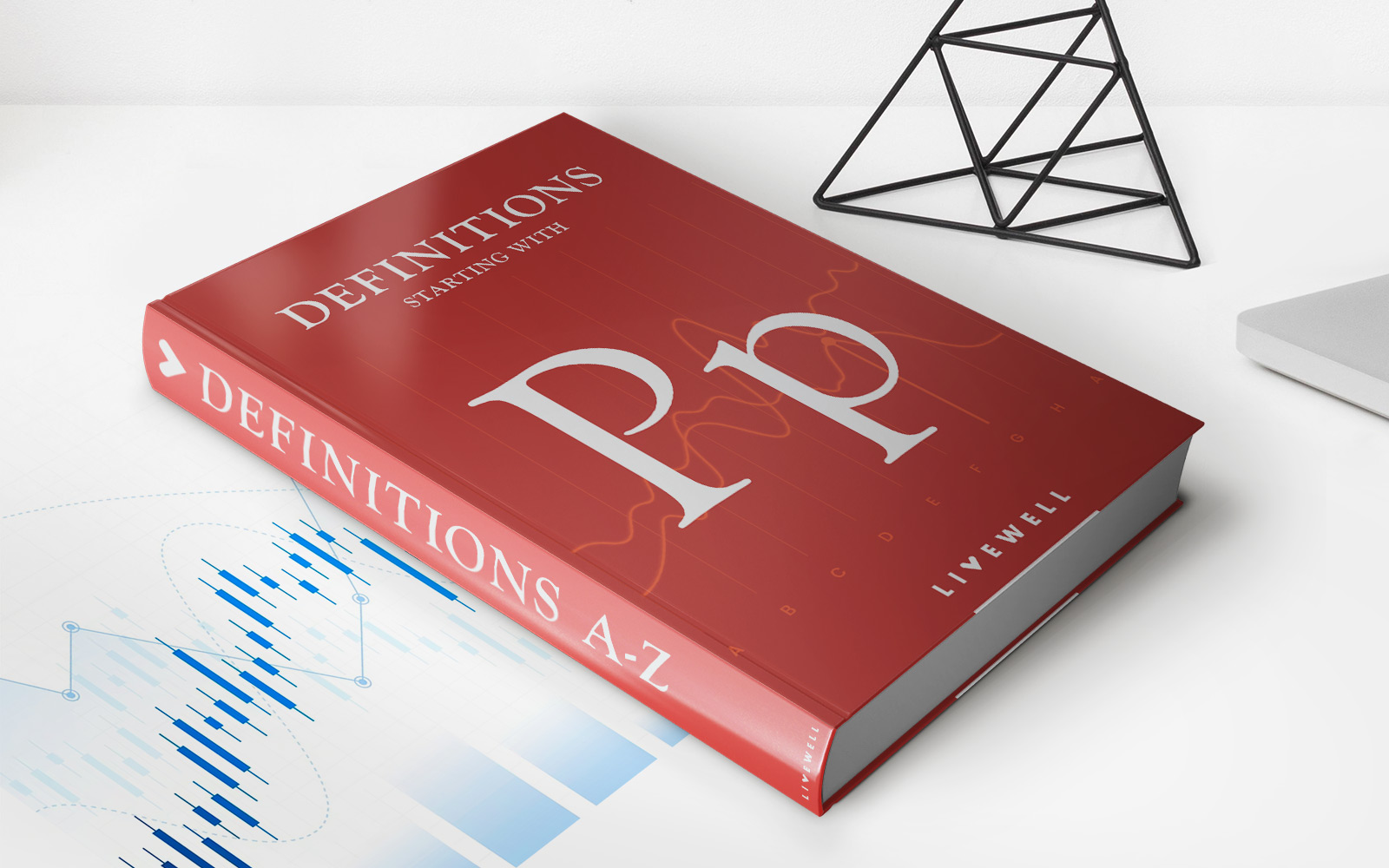

Finance
What Is Max Pain In Stocks
Published: January 18, 2024
Learn about max pain in stocks and how it affects the financial market. Discover the concept of max pain and its implications for investors and traders. #Finance
(Many of the links in this article redirect to a specific reviewed product. Your purchase of these products through affiliate links helps to generate commission for LiveWell, at no extra cost. Learn more)
Table of Contents
Introduction
The world of stock market investing can be both exciting and challenging. Traders and investors are always on the lookout for any tool or strategy that can help them make more informed decisions and increase their chances of success. One such tool that has gained popularity in recent years is the concept of “Max Pain” in stocks.
Max Pain refers to the theory that suggests that the options market tends to influence the price of the underlying stock, leading it towards the “maximum pain” point for option buyers. It represents a price level at which most option holders would incur the highest amount of loss or least amount of gain.
This theory is based on the idea that market makers and institutional traders have a vested interest in manipulating the price of the underlying stock to reduce their own losses. By pushing the stock price towards the point of maximum pain, they can benefit from the options premiums they collected and improve their own profitability.
In order to understand the concept of Max Pain, it’s important to have a basic understanding of options and how they work. Options are financial instruments that give investors the right, but not the obligation, to buy or sell an underlying asset at a specified price within a specific time frame. These contracts provide a level of flexibility and opportunity for traders to profit from market movements.
The Max Pain theory takes into account the open interest, or the total number of outstanding options contracts, at different strike prices. The strike price is the predetermined price at which the option can be exercised. By analyzing the open interest at each strike price, market participants can estimate the level at which option holders would experience the most loss.
While Max Pain is not a foolproof strategy and should not be the sole basis for trading decisions, it provides insights into potential price levels that could attract buying or selling pressure. Traders can use this information alongside other technical and fundamental analysis tools to form a more comprehensive view of the market and potentially make better-informed investment decisions.
In the next sections, we will explore in more detail the calculation of Max Pain, its interpretation, and its significance for traders in the stock market.
Definition of Max Pain in Stocks
Max Pain in stocks refers to the price level at which option buyers, or holders, would experience the maximum amount of loss or the least amount of gain based on the open interest of options contracts at different strike prices. It is a concept that explores the influence of the options market on the price movement of the underlying stock.
Market makers and institutional traders, who often hold positions in both options and the underlying stock, have an incentive to manipulate the stock price to their advantage. By pushing the price towards the level of maximum pain, they can minimize their own potential losses and capitalize on the premiums collected from options buyers.
To calculate the Max Pain level, traders analyze the open interest at each strike price. The strike price is the price at which the option can be exercised. The theory suggests that the stock price is likely to gravitate towards the strike price with the maximum open interest, resulting in maximum pain for options holders.
For example, suppose a stock has strike prices ranging from $50 to $100, with the highest open interest at the $75 strike price. According to the Max Pain theory, the stock price is likely to converge towards $75 as it approaches expiration. This convergence is driven by market makers and institutional traders adjusting their positions to influence the stock price.
It’s important to note that Max Pain is not a definitive prediction of where the stock price will ultimately settle. It is merely a statistical analysis of options open interest and the potential pressure exerted on the stock price. Other factors such as market sentiment, company fundamentals, and broader economic conditions can also influence stock prices.
Max Pain is often used in conjunction with other technical and fundamental analysis tools to gain a better understanding of potential support and resistance levels. These levels can provide insights into where buying or selling pressure may emerge based on the distribution of open interest across different strike prices.
While Max Pain can be a helpful tool for traders, it is important to use it alongside other indicators and analysis methods to make well-informed trading decisions. It should not be solely relied upon or treated as a guaranteed predictor of future price movements.
In the following sections, we will delve into the calculation of Max Pain, how it is interpreted, and its significance for traders in the stock market.
Calculation of Max Pain
The calculation of Max Pain involves analyzing the open interest of options contracts at various strike prices to determine the price level at which option holders would experience the maximum loss or minimal gain.
Here’s a step-by-step breakdown of the calculation process:
- Identify the relevant options: Start by selecting the options contracts that expire on a particular date, usually the monthly expiration date. These options will be used to calculate the Max Pain level.
- Compile the open interest: Gather data on the open interest, which represents the total number of outstanding options contracts, for each strike price of the selected options. The higher the open interest at a specific strike price, the greater its impact on the Max Pain calculation.
- Determine the Max Pain price: Analyze the open interest data and identify the strike price with the highest open interest. This strike price is considered the Max Pain price, as it reflects the level at which option holders would face maximum loss or minimal gain.
While the calculation sounds relatively straightforward, it requires access to options data and some level of expertise in interpreting the open interest figures. Traders often rely on specialized software or financial platforms that provide real-time information and perform the Max Pain calculation automatically.
It’s also worth noting that the Max Pain calculation is dynamic and can change throughout the trading session as new data comes in. Therefore, traders should continually monitor the open interest levels and adjust their trading strategies accordingly.
While the Max Pain calculation is a useful tool, it is important to understand that it is based on historical data and does not guarantee future price movements. It provides insights into potential levels of buying or selling pressure but should be used in conjunction with other technical and fundamental analysis methods for a comprehensive market view.
In the next section, we will explore how to interpret the Max Pain level and its implications for traders in the stock market.
Interpretation of Max Pain
The interpretation of Max Pain revolves around understanding the implications of the calculated price level on the stock’s future movements and market sentiment. Traders and investors analyze the Max Pain level to gain insights into potential support and resistance levels, as well as the possible direction of the stock price.
Here are key points to consider when interpreting the Max Pain level:
- Support and Resistance: The Max Pain level can act as a psychological support or resistance level for the stock. If the current stock price is close to the Max Pain level, it suggests that there may be buying pressure at that level, as options holders would want the price to move in their favor to minimize their losses.
- Price Convergence: The Max Pain level indicates the price at which market makers and institutional traders have an incentive to converge the stock price. Traders can watch for signs of price convergence towards the Max Pain level as it can provide insights into potential price dynamics.
- Options Expiration: The Max Pain level becomes particularly relevant as options expiration approaches. Traders may witness increased volatility or price movement towards the Max Pain level as positions are adjusted or closed out.
- Market Sentiment: The Max Pain level can also reflect the overall market sentiment surrounding a stock. If the Max Pain level is significantly higher than the current stock price, it may indicate bearish sentiment, while a Max Pain level lower than the current stock price might suggest bullish sentiment.
It’s important to understand that Max Pain is not a definitive predictor of price movements. While it provides valuable insights into potential pressure points and sentiment, other factors such as fundamental news, economic indicators, and market trends should also be considered in making trading decisions.
Traders often combine Max Pain analysis with technical indicators, such as support and resistance levels, moving averages, and trend lines, to build a comprehensive view of market dynamics. By incorporating multiple analysis tools, traders can make more informed decisions and increase their probability of success.
Additionally, it’s essential to note that Max Pain is primarily designed for options traders and may not have the same level of relevance for long-term investors. Long-term investors typically focus on company fundamentals, industry analysis, and broader economic factors rather than short-term option expirations.
In the next section, we will delve into the significance of Max Pain for traders in the stock market.
Significance of Max Pain for Traders
Max Pain holds significance for traders as it provides valuable insights into potential market sentiment, support and resistance levels, and the dynamics of the options market. Traders can leverage these insights to enhance their trading strategies and make more informed decisions.
Here are some key reasons why Max Pain is significant for traders:
- Identifying Price Levels: The Max Pain level helps traders identify potential price levels where there may be buying or selling pressure. By considering the convergence of the stock price towards the Max Pain level, traders can determine potential entry or exit points for their trades.
- Options Trading Strategies: Options traders can use Max Pain analysis to adjust their options strategies based on the distribution of open interest across different strike prices. The Max Pain level can provide insights into potential profit or loss areas and help refine their trading approach.
- Characterizing Market Sentiment: The Max Pain level can offer clues about the prevailing sentiment in the options market. If the Max Pain level is higher than the current stock price, it may suggest a bearish sentiment, while a lower Max Pain level could imply bullish sentiment. Traders can consider this information in conjunction with other indicators to get a holistic view of market sentiment.
- Support and Resistance Levels: The Max Pain level can act as a psychological support or resistance level for the stock. Traders can incorporate the Max Pain level into their technical analysis to define potential areas of support or resistance and make more informed trading decisions.
- Options Expiration Strategy: As options expiration approaches, the Max Pain level becomes particularly relevant. Traders can use Max Pain analysis to adjust their options positions or capitalize on potential price movements as market makers and institutional traders adjust their holdings to align with the Max Pain level.
It’s important to note that while Max Pain analysis can provide valuable insights, it should not be the sole basis for trading decisions. Traders should consider other factors such as company fundamentals, technical analysis, market trends, and overall economic conditions to form a well-rounded trading strategy.
Additionally, it’s crucial to stay updated on the latest open interest and monitor any changes in the Max Pain level throughout the trading session. By staying vigilant and adapting to evolving market conditions, traders can effectively use Max Pain analysis to their advantage.
Ultimately, Max Pain is a tool that traders can use in conjunction with other analysis techniques to gain a better understanding of market dynamics and potentially improve their trading performance.
In the next section, we will discuss some of the criticisms and limitations associated with the Max Pain theory.
Criticisms of Max Pain Theory
While Max Pain theory has gained popularity among traders, it is not without its critics. There are several criticisms and limitations associated with the concept that traders should be aware of:
- Subjectivity: One of the main criticisms of Max Pain theory is its subjectivity. The calculation of Max Pain relies on open interest data, which can vary across different sources and platforms. Different interpretations of open interest figures can lead to different Max Pain levels, making the theory somewhat subjective.
- Limited Scope: Max Pain theory focuses primarily on options data and may not fully consider other fundamental or technical factors that can influence stock prices. It does not take into account important market-moving events, industry news, or broader economic conditions that may impact a stock’s performance.
- Short-Term Perspective: Max Pain theory is more relevant for short-term traders and options expirations. Long-term investors who are focused on the fundamental aspects of a company may find limited applicability in the theory.
- Data Lag: The calculation of Max Pain relies on the availability of real-time open interest data. However, there may be a slight lag in obtaining the most up-to-date figures, which can limit the accuracy of the Max Pain level.
- Manipulation Concerns: Some critics argue that the Max Pain theory itself can be subject to manipulation by market participants. These participants may strategically trade options to push the stock price towards the calculated Max Pain level, thereby benefiting their own positions.
- Reliance on Historical Data: Max Pain analysis is based on historical open interest data and does not provide insights into future market developments. Traders should complement the analysis with other techniques, such as technical analysis and fundamental research, to gain a more comprehensive understanding of the market.
It’s important for traders to understand these criticisms and limitations when utilizing Max Pain theory in their trading strategies. While Max Pain can provide valuable insights, it should not be the sole basis for making trading decisions. It should be used in combination with other analysis methods and indicators to form a well-rounded strategy.
Ultimately, traders must exercise caution and critically evaluate all available information to make informed decisions in the dynamic and unpredictable stock market environment.
Now, let’s conclude the article and summarize the key points discussed.
Conclusion
Max Pain theory is a concept that has gained popularity among traders in the stock market. It focuses on analyzing the open interest of options contracts to identify the price level at which option holders would experience maximum loss or minimal gain. While Max Pain can provide valuable insights into potential support and resistance levels, market sentiment, and options expiration dynamics, it has its limitations and should be used in conjunction with other analysis techniques.
Traders can benefit from Max Pain analysis by incorporating it into their trading strategies. By identifying potential price levels of buying or selling pressure, traders can make more informed decisions for entry and exit points. Additionally, understanding the implications of the Max Pain level can help traders navigate options trading strategies, characterize market sentiment, and adjust their positions as options expiration approaches. However, it is important to remember that Max Pain is not a guaranteed predictor of future price movements and should be used alongside other tools and indicators.
It’s crucial for traders to stay updated on the latest open interest data, monitor changes in the Max Pain level, and complement the analysis with fundamental analysis, technical indicators, and broader market trends. By combining multiple analysis methods, traders can form a comprehensive view of the market and increase their chances of making successful trades.
In conclusion, while Max Pain theory offers valuable insights into market dynamics, it should not be solely relied upon for trading decisions. Traders should exercise caution and consider other factors that can influence stock prices. By maintaining a balance between Max Pain analysis and a holistic approach to trading, traders can strive for informed decision-making and potentially enhance their trading performance in the stock market.














